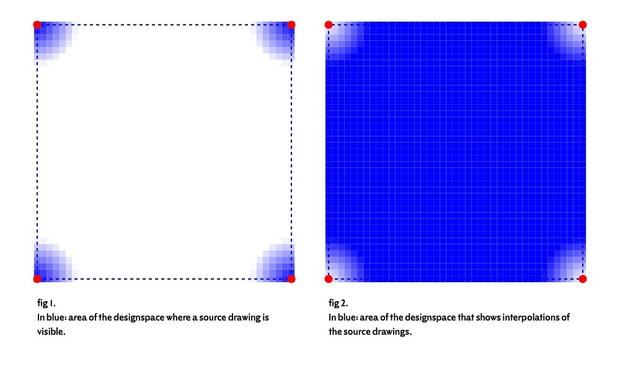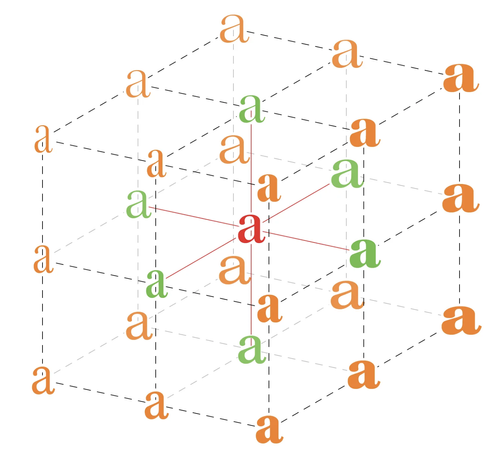@letterror @klim @RoboFont @drawBot The biggest issue I find in variable font development—beyond more than one axis—is that one can’t know at the outset how many masters one is going to need, and how much work is going to be involved in making corner locations correct* until one has completed and tested the axis extrema masters.
This obviously has implications for pricing variable font making.
*Where ‘correct’ is a locally and technologically restricted ersatz for perfection.
@klim @letterror @RoboFont @drawBot MM development always involved a predictable number of master designs derived from the number of axes.
I made this 2016 illustration of a three-axis variable design space using an MM font (Kepler), because I didn’t have an actual OT variable font. In the MM font, every one of these letters represents a complete master. In OT var, all the orange ones are technically optional, but you can’t know which ones you’ll need until you’ve made the green ones.
@klim @letterror @RoboFont @drawBot OTvar is defined in terms of a single outline set (which may or may not correspond to a design master), and deltas to other fixed locations in the design space. The only locations that technically need delta sets are the extrema of the individual axes, and those tend to be design masters in sources.
The interaction between the axes is indeed extrapolated—but extrapolated within the confines of the axis extrema—unless additional delta sets are introduced.
@klim @letterror @RoboFont @drawBot So in the diagram, those orange locations indicate corners of the design space between two or moore axes, which can be either extrapolated or controlled.
The math used is actually really good, and if you design your axes extremas carefully you can often avoid needing to add delta sets in all the corners.
@klim @letterror @RoboFont @drawBot
“I look at that design space and see 8 corners of the cube, those are the definite sources.”
Except, the variation axes do not connect those corners, and if they were to then the corners would be elsewhere and you’d still need to decide whether to inset delta sets of let them be extrapolated.
@klim @letterror @RoboFont @drawBot I’ve seen some projects in which axis extremes have been designed, then corner extrapolations have been instantiated as masters, then those have been tidied up, then the original extrema masters have been deleted and re-interpolated between the new corner masters, then those corner masters deleted, leaving extrema masters that are guaranteed to cleanly extrapolate to the corners.
Fun!

